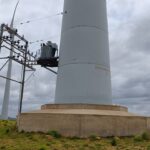Why support this project?
Across India, wind farms introduce clean energy to the grid which would otherwise be generated by coal-fired power stations. Wind power is clean in two ways: it produces no emissions and also avoids the local air pollutants associated with fossil fuels. Electricity availability in the regions has been improved, reducing the occurrence of blackouts across the area.
The projects support national energy security and strengthen rural electrification coverage. In constructing the turbines, new roads were built which improves accessibility for locals. The boost in local employment by people engaged as engineers, maintenance technicians, 24-hour on-site operators and security guards also boosts local economies and village services.
Real and Lasting Impact:
Permanence: Project activities must represent permanent reductions in GHG emissions. Renewable wind energy projects avoid emissions by displacing grid energy supply from fossil-fuel generation sources. Avoided emissions are considered permanent.
Additionality: A project is additional if the GHG emissions reductions would not occur without the intervention of the project activity. For renewable energy projects to meet additionality requirements, an analysis of alternative energy infrastructure development including the expansion of emissions-intensive, fossil-fuel electricity infrastructure is required. The analysis compares the investment financial rate of return (IRR) for the renewable energy project with the relevant benchmark, and all identified alternative projects that could be implemented to meet electricity demand. This comparative analysis determines the financial viability of the renewable energy project compared to alternative fossil-fuel energy projects and indicates whether a project requires income from carbon offsets to be financially viable. It was determined that these renewable energy projects would not achieve a sufficient IRR without the income from carbon offsets. Therefore, the projects are considered additional.
Leakage: In the context of renewable energy projects, leakage refers to the risk that the establishment of the project will generate an increase in measurable emissions outside the project area. Emissions leakage is very unlikely to occur due to the nature of displacing electricity and avoiding GHG emissions which would have otherwise been generated by fossil fuel sources. As such, renewable energy projects are considered to have negligible leakage risk.
SDGs: The project meets the following United Nations Sustainable Development Goals:
















